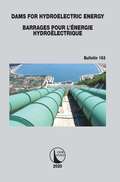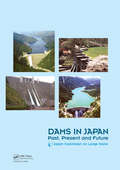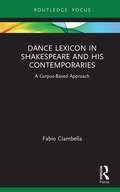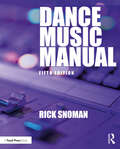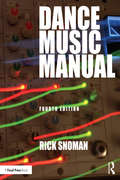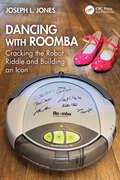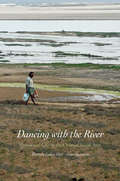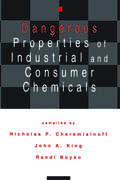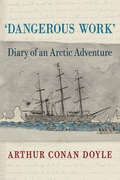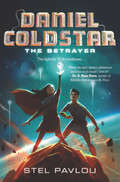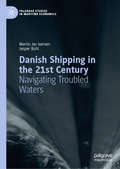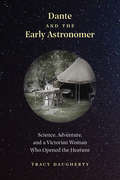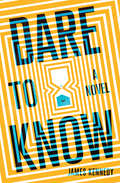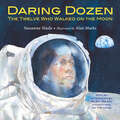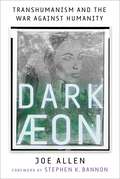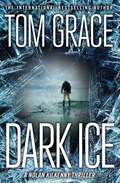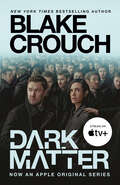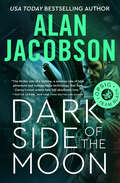- Table View
- List View
Dams and Water Transfers – An Overview / Barrages et Transferts d’Eau - Aperçu (ICOLD Bulletins Series #161)
by Cigb IcoldThe present Bulletin presents a complete response from the ‘Technical Committee of ICOLD on Dams and Water Transfer (CDWT)’ to the Terms of Reference. It starts with related global information, brings out related efforts made in countries with completely differing climate, economy, population distribution etc. about present status within and between river basins & countries – both surplus and or deficit, while recognizing the crucial role played by dams in water transfer to needy regions. It then enumerates guidelines followed in considering various options, while identifying geographical issues, limited by political territories & legal issues like water treaties. Essentially then, it dwells on possible need, potential and problems in water transfers that must be handled to overcome B/C issues faced by needy countries. In order to assist concerned professionals, the Bulletin finally elaborates on objections raised by different stake-holders in the subject and provides answers generated globally. The on-going debate world-over about WRD versus environmental impacts is then dealt with to help Member-countries overcome various issues. Le présent Bulletin présente une réponse complète du « Comité Technique sur les barrages et les transferts d’eau ». Il commence par des informations mondiales, fait ressortir les efforts déployés dans des pays au climat, à l'économie, à la répartition de la population, etc. complètement différents sur l'état actuel au sein et entre les bassins fluviaux et les pays - à la fois excédentaire et / ou déficitaire, tout en reconnaissant le rôle crucial joué par les barrages dans le transfert d'eau vers les régions nécessiteuses. Il énumère ensuite les lignes directrices suivies pour considérer diverses options, tout en identifiant les problèmes géographiques, limités par les territoires politiques et les questions juridiques comme les traités sur l'eau. Essentiellement, il s'attarde donc sur les besoins, le potentiel et les problèmes possibles des transferts d'eau qui doivent être traités pour surmonter les problèmes auxquels sont confrontés les pays dans le besoin. Afin d'aider les professionnels concernés, le Bulletin élabore enfin les objections soulevées par les différents acteurs du sujet et apporte des réponses générées globalement. Le débat en cours dans le monde entier par rapport aux impacts environnementaux est ensuite traité pour aider les pays membres à surmonter divers problèmes.
Dams for Hydroelectric Energy Barrages pour l’Énergie Hydroélectrique (ICOLD Bulletins Series #163)
by Nathalie SchaunerThe Bulletin is intended as a general document aimed at a wide technical audience involved with or affected by hydropower. Basic background data and some statistics are presented, with specific reference to hydro-electricity production, hydropower dams, hydropower plants, in operation or under construction. Key aspects of hydropower are discussed. Data are presented about typical capital and both internal and external operating costs. Environmental and social impacts are discussed and reference is made to the impact reservoirs have on greenhouse gas emissions. A section is dedicated to the exploitation of tidal energy by means of barrage systems. The current extent of hydropower development and the influence of policies aimed to favour the development of renewable energies are also discussed. Reference sources of information, on hydropower in general and interesting case-histories, are provided. Le Bulletin se veut un document général destiné à un large public technique impliqué ou affecté par l'hydroélectricité. Des données de base et quelques statistiques sont présentées, avec une référence spécifique à la production hydroélectrique, aux barrages hydroélectriques, aux centrales hydroélectriques, en fonctionnement ou en construction. Les principaux aspects de l'hydroélectricité sont discutés. Les données sont présentées sur le capital type et les coûts de fonctionnement internes et externes. Les impacts environnementaux et sociaux sont discutés et il est fait référence à l'impact des réservoirs sur les émissions de gaz à effet de serre. Une section est dédiée à l'exploitation de l'énergie marémotrice au moyen de systèmes de barrage. L'ampleur actuelle du développement hydroélectrique et l'influence des politiques visant à favoriser le développement des énergies renouvelables sont également abordées. Des sources d'information de référence, sur l'hydroélectricité en général et des études de cas intéressantes, sont fournies.
Dams in Japan: Past, Present and Future
by Japan Commission on Large DamsOverview of Japan’s long water history, by the Japanese Commission on large dams. Starting from the 7th century, when irrigation ponds were first constructed for paddy cropping, until the beginning of the 21st century. Elaborates on various roles of dams: water supply, power generation and flood control. Moreover, tries to clarify the negative impacts of dams on the natural environment and local societies, as well as extensive efforts made to minimize these impacts. Includes appendices with location and characteristics of main dams, administrative organs, river management system and water resources development river systems and facilities to offer the full picture. Richly-illustrated. Intended for dam and water resources professionals.
Dance Lexicon in Shakespeare and His Contemporaries: A Corpus Based Approach (Studies in Performance and Early Modern Drama)
by Fabio CiambellaThis book provides a thorough analysis of terpsichorean lexis in Renaissance drama. Besides considering not only the Shakespearean canon but also the Bard’s contemporaries (e.g., dramatists as John Marston and Ben Jonson among the most refined Renaissance dance aficionados), the originality of this volume is highlighted in both its methodology and structure. As far as methods of analysis are concerned, corpora such as the VEP Early Modern Drama collection and EEBO, and corpus analysis tools such as #LancsBox are used in order to offer the widest range of examples possible from early modern plays and provide co-textual references for each dance. Examples from Renaissance playwrights are fundamental for the analysis of connotative meanings of the dances listed and their performative, poetic and metaphoric role in sixteenth- and seventeenth-century drama. This study will be of great interest to Renaissance researchers, lexicographers and dance historians.
Dance Music Manual
by Rick SnomanDance Music Manual – a comprehensive guidebook for novice and seasoned professionals alike – walks readers through the tools and techniques required to create original, captivating and professional-sounding electronic dance music.Key features of the Dance Music Manual include the following: Learn to navigate the complex world of electronic music production. Unleash your creativity with practical advice, insider tips and expert techniques. Explore the intricacies of crafting infectious grooves and sculpting sounds. From beginner to expert, this comprehensive guide illuminates every aspect of producing, mixing and mastering dance music. Used by professionals worldwide, this updated fifth edition has been significantly rewritten and includes new content on building your studio, processing, sampling, sound design and a chapter on DJ techniques. A companion website supports the book by providing audio and video examples of the techniques.
Dance Music Manual: Tools, Toys, and Techniques
by Rick SnomanDance Music Manual, aimed at the novice and seasoned professional alike, takes the reader through the software and hardware needed to create original, captivating, and professional sounding music. Key features of Dance Music Manual include: How to create compelling, professional-sounding original or remixed dance tracks. The differences between different genres and how to produce them. How to expose your tracks to their chosen audience and equip you with the skills to develop your career as a dance music producer and engineer. Along with the book is a companion website, which provides examples of synthesis programming, compression, effects, MIDI files, and examples of the tracks discussed in this edition. The new and improved fourth edition covers processes and techniques used by music producers, masters, mixers, and DJs. Each page is full of facts presented in a manner that is easy to absorb and implement.
Dance Notations and Robot Motion (Springer Tracts in Advanced Robotics #111)
by Jean-Paul Laumond Naoko AbeHow and why to write a movement? Who is the writer? Who is the reader? They may be choreographers working with dancers. They may be roboticists programming robots. They may be artists designing cartoons in computer animation. In all such fields the purpose is to express an intention about a dance, a specific motion or an action to perform, in terms of intelligible sequences of elementary movements, as a music score that would be devoted to motion representation. Unfortunately there is no universal language to write a motion. Motion languages live together in a Babel tower populated by biomechanists, dance notators, neuroscientists, computer scientists, choreographers, roboticists. Each community handles its own concepts and speaks its own language. The book accounts for this diversity. Its origin is a unique workshop held at LAAS-CNRS in Toulouse in 2014. Worldwide representatives of various communities met there. Their challenge was to reach a mutual understanding allowing a choreographer to access robotics concepts, or a computer scientist to understand the subtleties of dance notation. The liveliness of this multidisciplinary meeting is reflected by the book thank to the willingness of authors to share their own experiences with others.
Dancing with Roomba: Cracking the Robot Riddle and Building an Icon
by Joseph L. JonesDancing with Roomba tells the unexpected story of the world’s favorite robot. For five decades, corporations spent millions pursuing a floor-cleaning robot. Legions of engineers toiled, dozens of patents were issued, yet every effort failed. Then came Roomba. Selling nearly 50 million units since its launch, Roomba’s unlikely success sprang from a breakthrough at an MIT robotics lab, an inventor who persevered through years of setbacks, and an inspired team that worked as one to smash every problem. This book provides a rare view behind the scenes, revealing how a revolutionary product came to be, how it works, and how a tiny company was able to best a crowd of corporate giants. Written in an easy, narrative style, Dancing with Roomba is accessible to all. Anyone who owns a Roomba, works in technology, dreams of building a product, or is just curious about the robot that launched a million memes will find much to love.
Dancing with the River
by Kuntala Lahiri-Dutt Gopa SamantaWith this book Kuntala Lahiri-Dutt and Gopa Samanta offer an intimate glimpse into the microcosmic world of "hybrid landscapes." Focusing on chars--the part-land, part-water, low-lying sandy masses that exist within the riverbeds in the floodplains of lower Bengal--the authors show how, both as real-life examples and as metaphors, chars straddle the conventional categories of land and water, and how people who live on them fluctuate between legitimacy and illegitimacy. The result, a study of human habitation in the nebulous space between land and water, charts a new way of thinking about land, people, and people's ways of life.
Dangerous Properties of Industrial and Consumer Chemicals
by Nicholas P. Cheremisinoff"This valuable resource provides detailed health and safety information on the hazardous and toxic properties of over 1,000 heavily used industrial and consumer chemicals. Lists chemicals both alphabetically and numerically according to their Chemical Abstract Service number permitting rapid access to specific data!"
Dangerous Work: Diary of an Arctic Adventure
by Sir Arthur Conan DoyleIn 1880 a young medical student named Arthur Conan Doyle embarked upon the "first real outstanding adventure" of his life, taking a berth as ship's surgeon on an Arctic whaler, the Hope. The voyage took him to unknown regions, showered him with dramatic and unexpected experiences, and plunged him into dangerous work on the ice floes of the Arctic seas. He tested himself, overcame the hardships, and, as he wrote later, "came of age at 80 degrees north latitude. " Conan Doyle's time in the Arctic provided powerful fuel for his growing ambitions as a writer. With a ghost story set in the Arctic wastes that he wrote shortly after his return, he established himself as a promising young writer. A subsequent magazine article laying out possible routes to the North Pole won him the respect of Arctic explorers. And he would call upon his shipboard experiences many times in the adventures of Sherlock Holmes, who was introduced in 1887's A Study in Scarlet. Out of sight for more than a century was a diary that Conan Doyle kept while aboard the whaler. Dangerous Work: Diary of an Arctic Adventure makes this account available for the first time. With humor and grace, Conan Doyle provides a vivid account of a long-vanished way of life at sea. His careful detailing of the experience of arctic whaling is equal parts fascinating and alarming, revealing the dark workings of the later days of the British whaling industry. In addition to the transcript of the diary, the e-book contains two nonfiction pieces by Doyle about his experiences; and two of his tales inspired by the journey. To the end of his life, Conan Doyle would look back on this experience with awe: "You stand on the very brink of the unknown," he declared, "and every duck that you shoot bears pebbles in its gizzard which come from a land which the maps know not. It was a strange and fascinating chapter of my life. " Only now can the legion of Conan Doyle fans read and enjoy that chapter.
Daniel Coldstar #2: The Betrayer (Daniel Coldstar #2)
by Stel PavlouIn this exciting sequel to The Relic War, adventure calls…but can Truth prevail?The galaxy is at war. And Daniel Coldstar and his Truth Seeker friends are traversing the galaxy, saving refugees from destroyed worlds and trying to locate the stolen Book of Planets before the evil Sinja use it to cause any more damage.Meanwhile, someone wants Daniel Coldstar to stray from his mission and sends him messages that lead him right to an abandoned ship—a ship that has mysterious ties to Daniel’s past.What does the anonymous messenger want with him? And who can Daniel really trust in a galaxy filled with the Sinja’s devious lies? Ever since his old friend Blink and an anatom named Hex betrayed him, Daniel isn’t sure. When the messages eventually lead Daniel to Ionica Lux’s home, long-held secrets are finally revealed and Daniel and Ionica will have to put their lives on their line to save their loved ones and destroy the Sinja forces once and for all.
Danish Shipping in the 21st Century: Navigating Troubled Waters (Palgrave Studies in Maritime Economics)
by Martin Jes Iversen Jesper BuhlSpurred by global macro-economic shifts, commercial and financial turbulence, as well as technological leaps in the early years of the new millennium, the Danish shipping industry has changed dramatically since the turn of the century. This book provides a new understanding of how rapid business environmental changes frame strategic choices and industry structures. The authors combine a conceptual chapter with three selected business history cases to apply a methodical approach to their study. Together, the five chapters unveil patterns in the development of Danish shipping which are historical and, at the same time, consider questions that address the present situation and the challenges of our time. In other words, this short book uses history for the purpose of understanding the present and to develop thinking for the future.
Dante and the Early Astronomer: Science, Adventure, and a Victorian Woman Who Opened the Heavens
by Tracy DaughertyExplore the evolution of astronomy from Dante to Einstein, as seen through the eyes of trailblazing Victorian astronomer Mary Acworth Evershed In 1910, Mary Acworth Evershed (1867–1949) sat on a hill in southern India staring at the moon as she grappled with apparent mistakes in Dante’s Divine Comedy. Was Dante’s astronomy unintelligible? Or was he, for a man of his time and place, as insightful as one could be about the sky? As the twentieth century began, women who wished to become professional astronomers faced difficult cultural barriers, but Evershed joined the British Astronomical Association and, from an Indian observatory, became an experienced observer of sunspots, solar eclipses, and variable stars. From the perspective of one remarkable amateur astronomer, readers will see how ideas developed during Galileo’s time evolved or were discarded in Newtonian conceptions of the cosmos and then recast in Einstein’s theories. The result is a book about the history of science but also a poetic meditation on literature, science, and the evolution of ideas.
Dare to Know: A Novel
by James Kennedy&“A razor-smart sci-fi corporate noir nightmare. Dare to Know is what happens when Willy Loman sees through the Matrix. A heartbreaking, time-bending, galactic mindbender delivered in the mordantly funny clip of a doomed antihero.&”—Daniel Kraus, co-author of The Shape of Water Dark Matter meets Annihilation in this mind-bending and emotional speculative thriller set in a world where the exact moment of your death can be predicted—for a price. Our narrator is the most talented salesperson at Dare to Know, an enigmatic company that has developed the technology to predict anyone&’s death down to the second. Divorced, estranged from his sons, and broke, he's driven to violate the cardinal rule of the business by forecasting his own death day. The problem: his prediction says he died twenty-three minutes ago. The only person who can confirm its accuracy is Julia, the woman he loved and lost during his rise up the ranks of Dare to Know. As he travels across the country to see her, he&’s forced to confront his past, the choices he's made, and the terrifying truth about the company he works for. Wildly ambitious and highly immersive, this mind-bending thriller explores the destructive power of knowledge and collapses the boundaries between reality, myth, and conspiracy as it races toward its shocking conclusion.
Daring Dozen: The Twelve Who Walked on the Moon
by Suzanne SladeA gorgeous introduction to the twelve brave men who have left footprints on the moon, just in time to celebrate the fiftieth anniversary of the first lunar landing.On July 20, 1969, Neil Armstrong took one small step and made history. Over the course of the next three-and-a-half years, twelve lunar explorers, including Alan Shepard and Gene Cernan, touched down on the moon's surface. Author and engineer Suzanne Slade reveals how the Apollo missions (1969-1972) built upon one another and led to important discoveries about our nearest neighbor in space. Back matter includes an afterword by Alan Bean (1932-2018), the fourth person to walk on the moon.
Dark Aeon: Transhumanism and the War Against Humanity
by Joe AllenHumanity Is Consumed by Relentless Transformation Like a thief in the night, artificial intelligence has inserted itself into our lives. It makes important decisions for us every day. Often, we barely notice. As Joe Allen writes in this groundbreaking book, &“Transhumanism is the great merger of humankind with the Machine. At this stage in history, it consists of billions using smartphones. Going forward, we&’ll be hardwiring our brains to artificial intelligence systems.&” The world-famous robot, Sophia, symbolizes a rising techno-religion. She takes her name from the goddess—or Aeon—whose fall from grace is described in the Gnostic Gospels. With an academic background in both science and theology, Allen confronts the paradox of what he calls &“good people constructing a digital abomination.&” Dark Aeon is nothing less than a cri de coeur for humanity itself. He takes us on a roller coaster ride through history and the emergence of Scientism, and from government-mandated mRNA vaccines to the weird visions of cyborg billionaires like Elon Musk. From Silicon Valley to China, these globalists&’ visions of humanity&’s future, exposed and described in Dark Aeon, are dire and terrifying. But Joe Allen argues that humanity&’s salvation is within our grasp. Only if we refuse to avert our eyes from the impending twilight before us.
Dark Ice (Nolan Kilkenny #3)
by Tom GraceA remote NASA research lab rests atop a two-mile thick glacier. Under the glacier is a hidden underground lake. <p><p> And inside the frozen lake is a secret. <p> When someone murders the scientists stationed at the lab, ex-Navy SEAL Nolan Kilkenny realizes that the strange life inside the undergound lake holds answers to questions about human existence and evolution—answers worth killing for.
Dark Matter: A Novel
by Blake CrouchNEW YORK TIMES BESTSELLER • COMING SOON TO APPLE TV+ • A &“mind-blowing&” (Entertainment Weekly) speculative thriller about an ordinary man who awakens in a world inexplicably different from the reality he thought he knew—from the author of Upgrade, Recursion, and the Wayward Pines trilogy &“Are you happy with your life?&”Those are the last words Jason Dessen hears before the kidnapper knocks him unconscious. Before he awakens to find himself strapped to a gurney, surrounded by strangers in hazmat suits.Before a man he&’s never met smiles down at him and says, &“Welcome back, my friend.&”In this world he&’s woken up to, Jason&’s life is not the one he knows. His wife is not his wife. His son was never born. And Jason is not an ordinary college professor but a celebrated genius who has achieved something remarkable. Something impossible.Is it this life or the other that&’s the dream? And even if the home he remembers is real, how will Jason make it back to the family he loves?From the bestselling author Blake Crouch, Dark Matter is a mind-bending thriller about choices, paths not taken, and how far we&’ll go to claim the lives we dream of.
Dark Side of the Moon (OPSIG Team Black #4)
by Alan JacobsonThe OPSIG team must literally leave Earth to save it in this &“thriller ride of a lifetime&” from the USA Today–bestselling author of The Lost Codex (Gayle Lynds). In 1972, Apollo 17 returned to Earth with two hundred pounds of rock—as well as something far more dangerous than they could have imagined. For decades, the military concealed the crew&’s mysterious discovery. But now a NASA contractor has leaked the intel to conspiring foreign powers, putting in their hands the most powerful weapon of mass destruction yet created. While FBI profiler Karen Vail and OPSIG Team Black colleague Alexandra Rusakov try to root out the NASA mole and break up the spy ring, covert operatives Hector DeSantos and Aaron Uziel prepare for a mission beyond anything they&’ve ever attempted—a spaceflight to the moon itself—to avert a war that could not only disrupt the global balance of power, but also end in catastrophic annihilation . . . Dark Side of the Moon is the 4th book in the OPSIG Team Black series, but you may enjoy reading the series in any order.
Dark Side of the Moon: Wernher Von Braun, The Third Reich, And The Space Race
by Wayne BiddleA stunning investigation of the roots of the first moon landing forty years ago. This illuminating story of the dawn of the space age reaches back to the reactionary modernism of the Third Reich, using the life of “rocket scientist” Wernher von Braun as its narrative path through the crumbling of Weimar Germany and the rise of the Nazi regime. Von Braun, a blinkered opportunist who could apply only tunnel vision to his meteoric career, stands as an archetype of myriad twentieth century technologists who thrived under regimes of military secrecy and unlimited money. His seamless transformation from developer of the deadly V-2 ballistic missile for Hitler to an American celebrity as the supposed genius behind the golden years of the U.S. space program in the 1950s and 1960s raises haunting questions about the culture of the Cold War, the shared values of technology in totalitarian and democratic societies, and the imperatives of material progress.
Dark Side of the Moon: Wernher von Braun, the Third Reich, and the Space Race
by Wayne BiddleA stunning investigation of the roots of the first moon landing forty years ago. This illuminating story of the dawn of the space age reaches back to the reactionary modernism of the Third Reich, using the life of "rocket scientist" Wernher von Braun as its narrative path through the crumbling of Weimar Germany and the rise of the Nazi regime. Von Braun, a blinkered opportunist who could apply only tunnel vision to his meteoric career, stands as an archetype of myriad twentieth century technologists who thrived under regimes of military secrecy and unlimited money. His seamless transformation from developer of the deadly V-2 ballistic missile for Hitler to an American celebrity as the supposed genius behind the golden years of the U.S. space program in the 1950s and 1960s raises haunting questions about the culture of the Cold War, the shared values of technology in totalitarian and democratic societies, and the imperatives of material progress.
Dark Star: A New History of the Space Shuttle
by Matthew H. HerschA captivating history of NASA&’s Space Transportation System—the space shuttle—chronicling the inevitable failures of a doomed design.In Dark Star, Matthew Hersch challenges the existing narrative of the most significant human space program of the last 50 years, NASA&’s space shuttle. He begins with the origins of the space shuttle: a century-long effort to develop a low-cost, reusable, rocket-powered airplane to militarize and commercialize space travel, which Hersch explains was built the wrong way, at the wrong time, and for all the wrong reasons. Describing the unique circumstances that led to the space shuttle&’s creation by President Richard Nixon&’s administration in 1972 and its subsequent flights from 1981 through 2011, Hersch illustrates how the space shuttle was doomed from the start.While most historians have accepted the view that the space shuttle&’s fatal accidents—including the 1986 Challenger explosion—resulted from deficiencies in NASA&’s management culture that lulled engineers into a false confidence in the craft, Dark Star reveals the widespread understanding that the shuttle was predestined for failure as a technology demonstrator. The vehicle was intended only to give the United States the appearance of a viable human spaceflight program until funds became available to eliminate its obvious flaws. Hersch&’s work seeks to answer the perilous questions of technological choice that confront every generation, and it is a critical read for anyone interested in how we can create a better world through the things we build.
Dark Territory: The Secret History of Cyber War
by Fred Kaplan&“An important, disturbing, and gripping history&” (Kirkus Reviews, starred review), the never-before-told story of the computer scientists and the NSA, Pentagon, and White House policymakers who invent and employ cyber wars—where every country can be a major power player and every hacker a mass destroyer.In June 1983, President Reagan watched the movie War Games, in which a teenager unwittingly hacks the Pentagon, and asked his top general if the scenario was plausible. The general said it was. This set in motion the first presidential directive on computer security. From the 1991 Gulf War to conflicts in Haiti, Serbia, Syria, the former Soviet republics, Iraq, and Iran, where cyber warfare played a significant role, Dark Territory chronicles a little-known past that shines an unsettling light on our future. Fred Kaplan probes the inner corridors of the National Security Agency, the beyond-top-secret cyber units in the Pentagon, the “information warfare” squads of the military services, and the national security debates in the White House to reveal the details of the officers, policymakers, scientists, and spies who devised this new form of warfare and who have been planning—and (more often than people know) fighting—these wars for decades. “An eye-opening history of our government’s efforts to effectively manage our national security in the face of the largely open global communications network established by the World Wide Web….Dark Territory is a page-turner [and] consistently surprising” (The New York Times).
Dark Was the Night: Blind Willie Johnson's Journey to the Stars
by Gary GolioThe poignant story of Blind Willie Johnson--the legendary Texas musician whose song "Dark Was the Night" was included on the Voyager I space probe's Golden RecordWillie Johnson was born in 1897, and from the beginning he loved to sing--and play his cigar box guitar. But his childhood was interrupted when he lost his mother and his sight. How does a blind boy make his way in the world? Fortunately for Willie, the music saved him and brought him back into the light. His powerful voice, combined with the wailing of his slide guitar, moved people. Willie made a name for himself performing on street corners all over Texas. And one day he hit it big when he got a record deal and his songs were played on the radio. Then in 1977, his song--"Dark Was the Night"--was chosen to light up the darkness when it was launched into space on the Voyager I space probe's famous Golden Record. His immortal song was selected for the way it expresses the loneliness humans all feel, while reminding us we're not alone.

